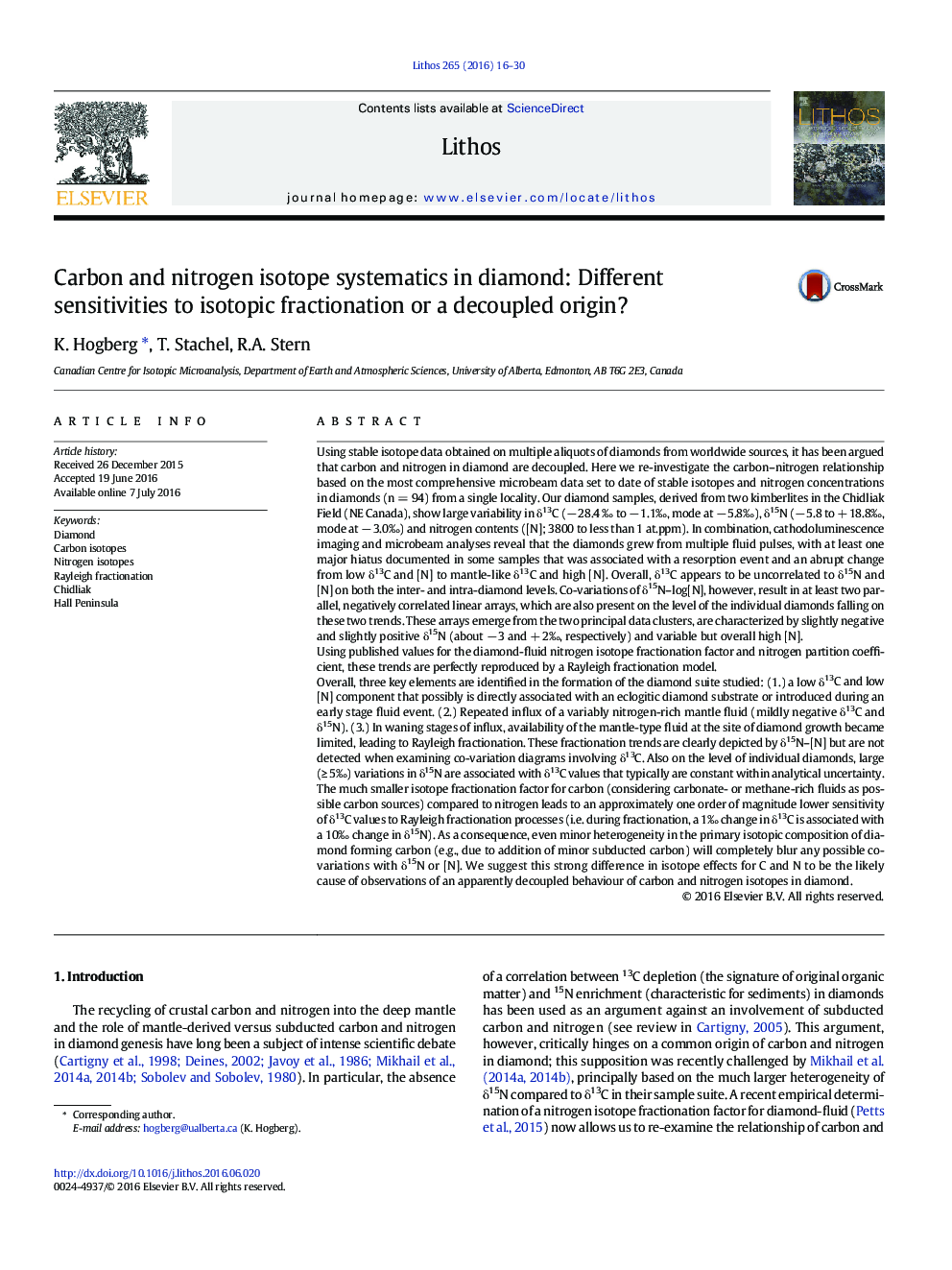| Article ID | Journal | Published Year | Pages | File Type |
|---|---|---|---|---|
| 5784296 | Lithos | 2016 | 15 Pages |
Abstract
Overall, three key elements are identified in the formation of the diamond suite studied: (1.) a low δ13C and low [N] component that possibly is directly associated with an eclogitic diamond substrate or introduced during an early stage fluid event. (2.) Repeated influx of a variably nitrogen-rich mantle fluid (mildly negative δ13C and δ15N). (3.) In waning stages of influx, availability of the mantle-type fluid at the site of diamond growth became limited, leading to Rayleigh fractionation. These fractionation trends are clearly depicted by δ15N-[N] but are not detected when examining co-variation diagrams involving δ13C. Also on the level of individual diamonds, large (â¥Â 5â°) variations in δ15N are associated with δ13C values that typically are constant within analytical uncertainty. The much smaller isotope fractionation factor for carbon (considering carbonate- or methane-rich fluids as possible carbon sources) compared to nitrogen leads to an approximately one order of magnitude lower sensitivity of δ13C values to Rayleigh fractionation processes (i.e. during fractionation, a 1â° change in δ13C is associated with a 10â° change in δ15N). As a consequence, even minor heterogeneity in the primary isotopic composition of diamond forming carbon (e.g., due to addition of minor subducted carbon) will completely blur any possible co-variations with δ15N or [N]. We suggest this strong difference in isotope effects for C and N to be the likely cause of observations of an apparently decoupled behaviour of carbon and nitrogen isotopes in diamond.
Related Topics
Physical Sciences and Engineering
Earth and Planetary Sciences
Geochemistry and Petrology
Authors
K. Hogberg, T. Stachel, R.A. Stern,
